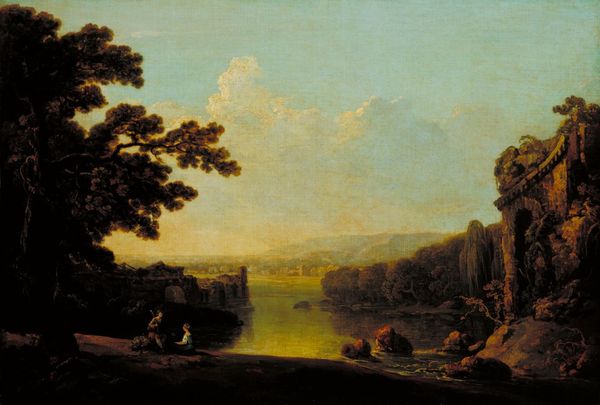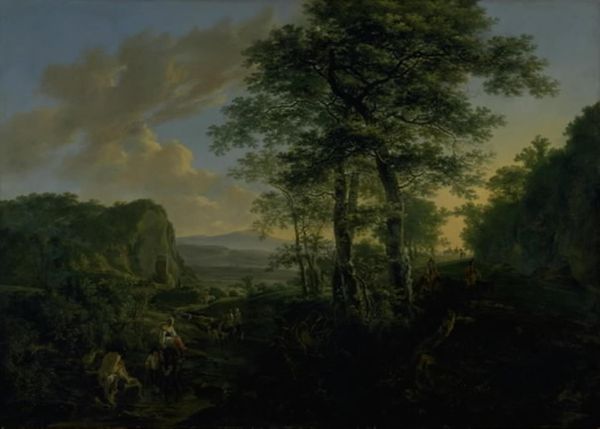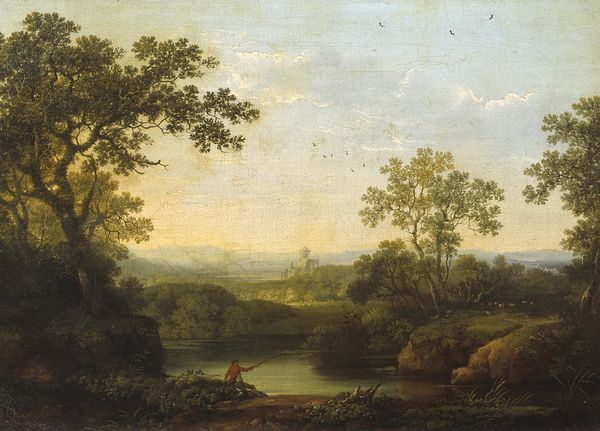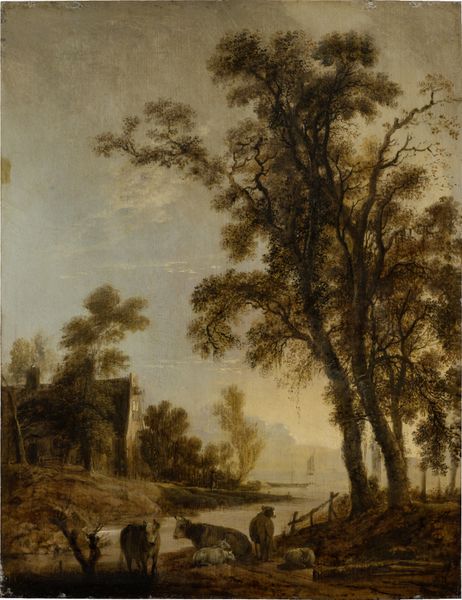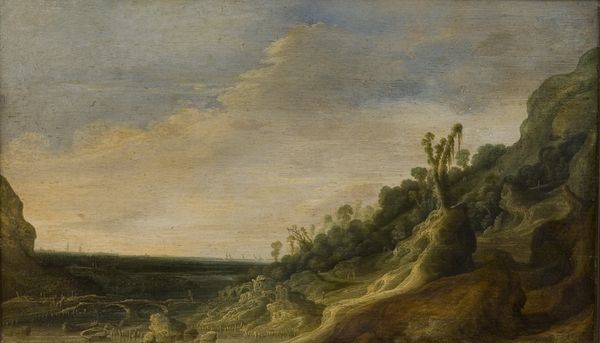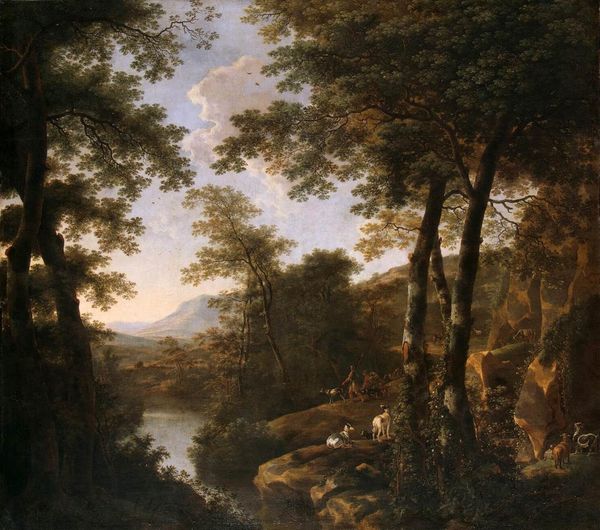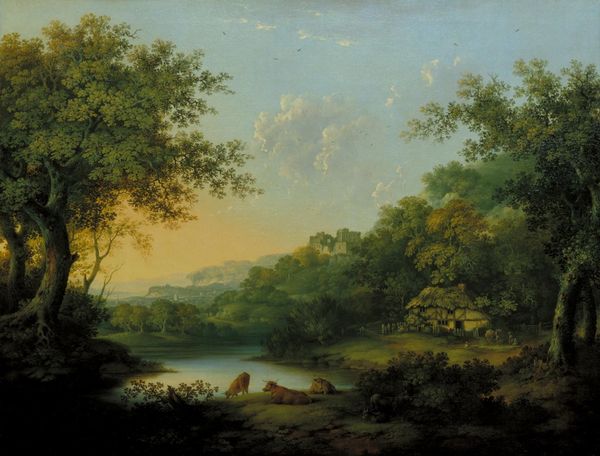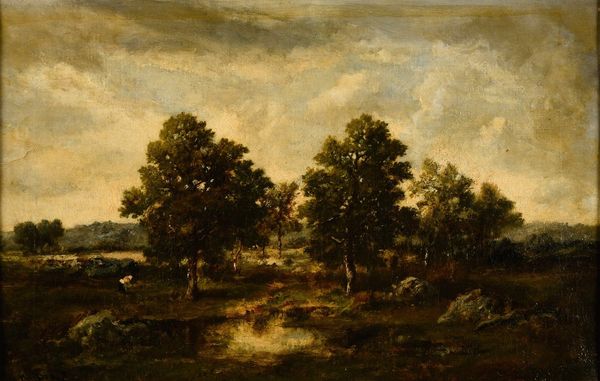
painting, plein-air, oil-paint
#
painting
#
plein-air
#
oil-paint
#
landscape
#
river
#
romanticism
#
realism
Dimensions: height 57.2 cm, width 82.4 cm, thickness 4 cm, depth 10 cm
Copyright: Rijks Museum: Open Domain
Editor: This is Alexandre Calame's "Landscape," painted sometime between 1830 and 1845, using oil paint. It evokes a feeling of peacefulness. I'm curious, as someone with deep understanding of art history, how do you interpret this painting? Curator: Considering the socio-political landscape of Europe during the Romantic era, paintings like these became incredibly popular as people became disenchanted by increasing industrialization and urbanization. Landscape painting offered an escape to an idealized vision of nature. It spoke to a yearning for simpler times, almost as an antidote to modernization. Notice, for instance, how the light filters through the trees, creating a sense of tranquility and highlighting a harmonious relationship between humans, represented by the riders on horseback, and their environment. Do you think that emphasis is intentional, or more representational of real-world interaction with the environment? Editor: It feels intentionally harmonious. The composition almost invites the viewer into that tranquil space. Was there a specific kind of political patronage around this kind of idealized landscape art? Curator: Precisely! Landscape painting became a powerful tool for nation-building. The ruling elite often commissioned landscape paintings as representations of national identity and territorial claims. Depictions of "untouched" lands reinforced nationalistic ideologies about purity and natural grandeur, subtly linking them to power and legitimacy of governance. Does understanding that alter your viewing? Editor: It definitely provides more context for the artist’s intention, given what it means to glorify a certain idea of landscape in art. The "peacefulness" takes on a different kind of charge now. Curator: Exactly, viewing art within historical, institutional and political frameworks deepens our interpretation and opens new paths of thought. Editor: This perspective makes me realize I need to learn more about the historical settings in which artists were working, that's super useful.
Comments
No comments
Be the first to comment and join the conversation on the ultimate creative platform.
